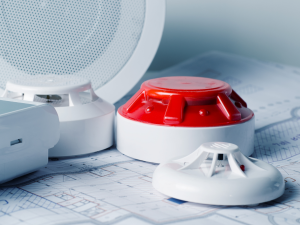Security has always been a paramount concern for businesses and individuals alike. Over the years, the methods and technologies used to ensure safety have evolved significantly. From the early days of simple alarm systems to the sophisticated 24/7 live monitoring solutions available today, the journey of security technology is a testament to human ingenuity and the relentless pursuit of safety. This article explores the evolution of security systems, highlighting the advancements that have led to the development of 24/7 live monitoring and its benefits for modern businesses.

The Early Days: Basic Alarm Systems
The concept of security alarms dates back to the 19th century when the first electro-mechanical alarm system was invented by Augustus Pope in 1853. These early systems were designed to alert property owners to unauthorized entry through a series of bells and whistles. While rudimentary, they laid the foundation for future advancements in security technology. As technology progressed, alarm systems became more sophisticated. The introduction of electrical circuits allowed for more reliable and effective alarms. By the mid-20th century, alarm systems had become a common feature in homes and businesses, providing a basic level of security against intrusions.
The Rise of Electronic Security Systems
The 1970s and 1980s saw significant advancements in electronic security systems. The development of motion sensors, glass break detectors, and magnetic door contacts enhanced the capabilities of alarm systems. These innovations allowed for more comprehensive coverage and improved the accuracy of detecting unauthorized entry. During this period, security systems also began to incorporate central monitoring stations. These stations were staffed by security personnel who could respond to alarms and dispatch emergency services if necessary. This marked the beginning of a more proactive approach to security, where real-time monitoring and response became possible.The Advent of Video Surveillance
The introduction of video surveillance in the 1990s revolutionized the security industry. Closed-circuit television (CCTV) systems allowed for continuous monitoring of properties, providing visual evidence of security breaches. This technology not only enhanced the ability to detect and respond to incidents but also served as a powerful deterrent to potential criminals. Video surveillance systems continued to evolve with the advent of digital technology. Digital video recorders (DVRs) replaced analog tapes, allowing for higher quality recordings and easier storage and retrieval of footage. The integration of video analytics further improved the effectiveness of surveillance systems by enabling automated detection of suspicious activities.The Emergence of 24/7 Live Monitoring
The evolution of security technology culminated in the development of 24/7 live monitoring systems. These systems combine the capabilities of advanced video surveillance, real-time monitoring, and immediate response to provide comprehensive security coverage. The concept of 24/7 live monitoring is based on the continuous observation of a property by trained security professionals, who can respond to incidents as they occur.Benefits of 24/7 Live Monitoring
- Enhanced Security: The primary benefit of 24/7 live monitoring is enhanced security. Continuous surveillance ensures that any suspicious activity is detected and addressed immediately, reducing the risk of theft, vandalism, and other security breaches.
- Real-Time Response: With 24/7 live monitoring, security personnel can respond to incidents in real-time. This rapid response can prevent minor issues from escalating into major problems, protecting both property and people.
- Deterrence: The presence of live monitoring can act as a deterrent to potential criminals. Knowing that a property is under constant surveillance can discourage illegal activities.
- Operational Efficiency: Beyond security, 24/7 live monitoring can improve operational efficiency. For example, monitoring can help identify and address issues such as equipment malfunctions or safety hazards, ensuring smooth operations.
- Peace of Mind: For business owners and managers, knowing that their property is being monitored around the clock provides peace of mind. This allows them to focus on other aspects of their business without worrying about security.
Implementing 24/7 Live Monitoring
To effectively implement a 24/7 live monitoring system, businesses must consider several factors:- Assess Security Needs: Conduct a thorough assessment of your business’s security needs and identify potential vulnerabilities. This assessment will help determine the scope and scale of the monitoring solution required.
- Choose the Right Provider: Select a reputable 24/7 live monitoring provider with a proven track record of success. Look for providers that offer customizable solutions tailored to your specific needs.
- Install and Configure Systems: Work with your provider to install and configure the necessary monitoring systems, including cameras, sensors, and software. Ensure that all systems are properly integrated and optimized for maximum effectiveness.
- Train Staff: Provide training for your staff on the use and benefits of the 24/7 live monitoring system. Ensure that employees understand their roles and responsibilities in maintaining security.
- Continuous Monitoring and Improvement: Regularly review and assess the performance of your 24/7 live monitoring system. Make necessary adjustments and improvements to ensure that the system remains effective in combating evolving security threats.
